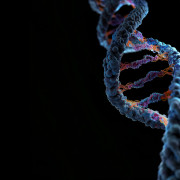- Science News
- Young Minds
- Esther Lederberg – Pioneer in Microbial Genetics
Esther Lederberg – Pioneer in Microbial Genetics

Esther Lederberg. Image from http://www.estherlederberg.com/ColleaguesIndex.html
Frontiers for Young Minds takes you down on a dive into the depths of the historical scientific archives and introduces you to scientists you may have not heard about, but you should! This time, we tell you the story of a scientist who made major discoveries which pioneered the field of microbial genetics in the 1950s.
Microbes are widely used for scientific development. Microbes and their genes have been essential in discovering DNA as genetic material and, today, they are useful for different purposes - for instance:
the detection of CoViD-19 (Sars-Cov-2 is its full virus name) by Polymerase Chain Reaction (PCR) analysis of nose swabs,
pharmaceuticals production
targeted therapies, including cancer therapies.
Esther Lederberg was a pioneer of microbial genetics, which is the study of the processes how microorganisms can inherit information. Even though she is responsible for discoveries that shaped the direction of subsequent biological research, she never achieved the same fame as her male colleagues and missed out on a Nobel Prize.
Early Life
Born Esther Miriam Zimmer**,** she was born on December 18, 1922, in the Bronx, New York, to David Zimmer and Pauline Geller Zimmer. She grew up during the Great Depression, in very poor conditions. Her family had Orthodox Jewish background, and she learned Hebrew – which was very unconventional, as traditionally, Orthodox Jewish girls shouldn’t study Hebrew. Her father was her teacher, and they were very close.
Lederberg graduated from high school at 16 and then won a scholarship to study at Hunter College, City University of New York. At first, she wanted to study humanities and social sciences, but then she soon changed her mind and started to study biochemistry.
In 1942, aged 24, she completed her degree and won, in 1944, a fellowship at Stanford University to take a master's course in genetics. Lederberg completed her master’s degree in 1946 and moved to the University of Wisconsin, where she finished her Ph.D. in 1950. It was during this Ph.D. that she would make the first of her foundational discoveries.
Between her master’s degree and the start of her Ph.D., she married Joshua Lederberg, and they were together until their divorce in 1968.
Foundational Discoveries
During her Ph.D. while studying the K12 strain of E-Coli (a bacteria which lives in your intestines) Lederberg discovered the presence of plaques on the agar plates (petri dishes used to culture microorganisms) that she was analyzing. Plaques were known to be caused by bacteriophages, meaning one had to be on the plate. By using UV techniques, she isolated the bacteriophage, and it was named Lambda (λ – the Greek letter Lambda).
The discovery of the Lambda bacteriophage led to another crucial discovery, made with Lederberg’s husband Joshua.
The Lambda bacteriophage can have two different infection cycles.
In one cycle it enters the bacteria cells and quickly replicates its DNA, floating freely inside the bacterial cell, until it forms phages and destroys the infected cell and its membrane. The “Lysis” stage is when the destroyed cell releases the new phages and they go out seeking new host cells to infect, and form plaques. This is called the Lytic cycle.
In the other cycle, the bacteriophage stays dormant within the host cell, without reproducing itself and causing the cell’s death. This is called the Lysogenic cycle. The Lederbergs discovered that in this dormant form, the genetic material of Lambda is inserted into the host bacteria’s gene sequence. When the phage is integrated into the host bacteria DNA it remains dormant and is called a prophage. When it’s prompted to reproduce itself, the phage leaves the host cell’s DNA and starts the Lytic cycle.
The Lederbergs also found that during the Lysogenic phase, the phage could take some genetic material from the host cell and could insert it into the DNA of the next host: this is an exchange of genetic material between two different hosts by using a virus and this process is called transduction.
These discoveries were the crucial starting point for the development of molecular genetics and virology. They also supplied essential tools for studying genetic recombination and gene regulation.
Another key discovery in Lederberg’s career was the Replica Plating technique. Scientists had been struggling for many years with the problem of reproducing bacterial colonies in mass form, exactly as on the original agar plate – essential for the investigation of the drug resistance of bacteria.
Esther, who was, as microbiologist Stanley Falkow said, a “genius… experimentally and methodologically in the lab”, created a simple technique that may have been inspired by her father’s press at his work.
This technique customs agar-based plates, pressing the master plate onto a sterile primary surface, and then stamping the bacteria onto secondary plates. This technique allows researchers to isolate a specific bacteria phenotype, that they wanted to study and deeply analyze. The Lederbergs’ simple technique showed that mutations that lead to bacterial resistance can happen before exposure to drugs like antibiotics, and Replica Plating is now a standard technique in microbiology.
These are just the two most foundational of the many discoveries that Esther made during her career. She contributed enormously to the development of microbiology and genetics, but her work wasn’t easy in a science world dominated by men.
The Biggest Challenge – Gender Discrimination
Esther was a victim of 1950’s and 1960’s sexist attitudes to female scientists, and she struggled to achieve recognition of her research. Unhappily, she was a victim of the Matilda Effect, which is term coined for the bias against acknowledging the achievements of women scientists, whose work is instead attributed to their male colleagues.
In 1958 Joshua Lederberg received the Nobel Prize for Medicine, together with George Wells Beadle and Edward Tatum. Even though the prize was for the findings on genetic recombination and bacteria genetic material, in which Esther Lederberg was the main scientist, she wasn’t named for the award. She sadly attended the ceremony just sitting in the audience, though she had done the hard experimental work that allowed Joshua to win the Nobel Prize.
Later Life and Remembering Lederberg
Today her ex-husband and Nobel Laureate Joshua Lederberg is still more well-known than her, but Esther Lederberg was a powerful and intelligent woman that struggled to be recognized as she deserved.
She was also a powerful feminist who had a strong advocate voice, both for herself and for other women, to have professional recognition. She and two other women petitioned Stanford University for a faculty role, but Lederberg never received a tenured position (while her husband took tenure as Head of the Genetics Department).
At 70 years old Lederberg married Matthew Simon, an engineer, and stayed with him for the rest of her life. She died on November 11, 2006, at 83 years old due to pneumonia and heart failure.
The time has now come to remember her as a pioneer in science and a strong woman whose fight for recognition is inspirational.
Want to know more about an earlier, forgotten key contributor who enabled the whole microbiological plating process? Read about Fanny Hesse here. If you want to learn more about bacteriophages, the bacterial viruses, read a kid-friendly article about it here.







